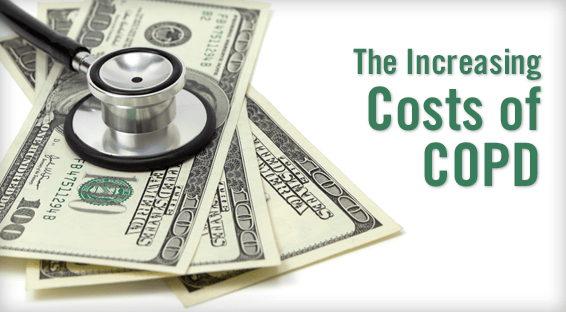Chronic lower respiratory disease—the large majority of which is COPD—currently ranks as the third leading cause of mortality in the United States. Recent estimates of the costs associated with chronic lower respiratory disease have presented asthma and COPD together, which does not allow for a true understanding of the costs of COPD to the national healthcare system. Fur-ther complicating available data is the fact that patients with COPD often have a multitude of comorbidities. “Most COPD is attributable to smoking, which can also cause heart disease, cancer, and many other conditions,” explains Earl S. Ford, MD, MPH. “This makes it difficult to understand what costs are directly attributable to COPD and what costs are actually attributable to conditions that co-exist with COPD. Some of the previous studies looking at the costs of COPD have likely included ‘double counting’ from not factoring in costs that are actually attributable to these comorbidities.”
A Thorough Analysis
For a study published in Chest, Dr. Ford and colleagues estimated national and state-specific COPD-attributable annual medical costs by payer and absenteeism in 2010 and projected medical costs through 2020. The team used the 2006 to 2010 Medical Expenditure Panel Survey, 2004 National Nursing Home Survey, and 2010 CMS data to generate cost estimates and 2010 census data to project medical costs through 2020. “We felt that the most presentable costs were those that were estimated after accounting for 11 comorbidities, including heart disease, pneumonia, diabetes, asthma, and depression,” adds Dr. Ford. After accounting for these other comorbidities, the researchers estimated that the 2010 costs attributable to COPD and its sequelae were $32.1 billion (Figure). By adding an estimated $3.9 billion in absenteeism costs from 16.4 million days of work lost because of COPD, the total estimated burden increased to $36 billion. Based on the assumption that the prevalence of COPD remains unchanged, the study team estimated that total COPD-related costs would reach $49 billion in 2020.
Wide Variation by State
Dr. Ford and colleagues found a wide range in state-by-state data regarding COPD-attributable costs. Absenteeism costs were lowest in Wyoming ($5.7 million) and highest in California ($434.0 million). Medical costs ranged from $42.5 million in Alaska to $2.5 billion in Florida. “The wide variation observed in our analysis mostly reflects the population of the states,” Dr. Ford explains. “For example, Florida has a relatively large population that is older, on average, whereas Alaska has a much smaller population. Alaska has a lower prevalence of treated COPD (2.4%) than Florida (3.6%). There are 16,400 people being treated for COPD in Alaska, compared with 743,000 people in Florida.” He adds that regional variations in treating COPD could contribute to the cost differences that were seen from state to state. When Dr. Ford’s team broke down costs by payer, they found that about 18% of COPD-attributable costs were paid for by private insurance, 25% by Medicaid, and 51% by Medicare. The remaining costs were paid by uninsured patients or by individuals using other payment options. “The large portion of costs paid for by Medicare likely reflects the fact that people with COPD tend to be older,” adds Dr. Ford.
How to Lower Costs?
Researchers have estimated that 75% to 80% of COPD is attributable to smoking. “The obvious way to lower costs in general for COPD is to help prevent non-smokers from ever smoking,” says Dr. Ford. “This would prevent them from developing COPD in all likelihood. Another important strategy is to help smokers quit by enrolling them into effective smoking cessation programs.” Dr. Ford recommends the following approaches to further help lower costs resulting from care for patients who have already been diagnosed with COPD:
• Encourage patients to receive appropriate vaccinations.
• Ensure patients receive and adhere to appropriate medications. Research has shown that patients who adhere to their COPD medications are less likely to experience exacerbations and may reduce future hospitalizations, which are a significant driver of costs relating to COPD.
• Consider pulmonary rehabilitation programs. Studies show that proper pulmonary rehabilitation programs can help lower exacerbations and other COPD-related complications.
• Monitor cardiovascular disease risk factors. Patients with COPD are at increased risk for developing heart disease.
• Encourage and reinforce smoking cessation efforts. About 40% of COPD patients smoke. Any effort to reduce these rates will likely reduce costs relating to COPD care.
“With good medical management and a focus on smoking prevention or cessation, healthcare providers can help lower COPD-attributable costs,” says Dr. Ford. ”These efforts are critical to helping avoid reaching our total costs projections by the time we reach 2020.




 TimH
TimH